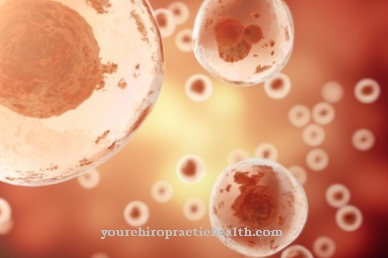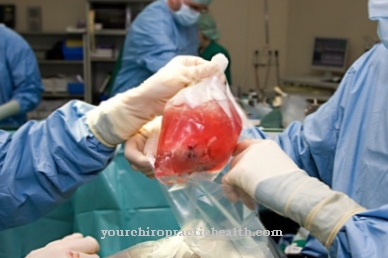DNA damage can be caused by various causes such as UV rays. This damage is then caused by a variety of mechanisms DNA repair fixed so that the following protein biosynthesis, which is necessary for all processes in the body, can run smoothly.
What is DNA Repair?
The DNA consists of a double strand and is continuously multiplied. This process is known as DNA replication. This can lead to errors that need to be repaired. But this is only one reason for possible DNA damage. The DNA can also be damaged by external influences such as UV rays. This then leads to mutations that affect the proteins produced. They lose their function or become too active, they can no longer reach their destination in the cell or they can no longer be broken down by the cell when the protein is no longer needed.
There are different DNA repair mechanisms. Which mechanism comes into effect depends on the type of DNA damage. This can involve the repair of a single-strand or a double-strand break as well as the repair of individual bases.
The repair is carried out by enzymes that reassemble the DNA if it breaks. These are ligases. The exchange of bases is carried out by recombinases and polymerases. DNA helicases are used to unwind the DNA. They prepare the affected DNA sections for repair.
Function & task
If the DNA breaks, various repair mechanisms can come into effect. These mechanisms are known as homologous or non-homologous recombination.
Recombinations occur not only in the case of DNA damage, but also in reproduction, when the DNA of both partners recombines and the embryo is formed. This recombination is then called sexual recombination. In homologous recombination to remove DNA damage, two similar, homologous DNA strands are attached to one another. Then the DNA strands are paired and a certain DNA segment is exchanged between the two strands. In the meantime, the so-called "Holliday structure" of the DNA is formed. This process of exchange is carried out by special enzymes, the recombinases.
A break can also occur through the direct joining of two DNA ends. In this case there is no homologous sequence, which means that a gap in the DNA between two ends has to be filled in to create the missing homologous region. This is called "synthesis dependent strand-annealing" and DNA polymerases fill the gaps.
Another possibility of repair is to shorten two ends until they can be put back together so that the areas fit together. This is the "single strand annealing". As a result, short areas of DNA are lost. This repair is carried out by the nucleotide excision repair system.
Non-homologous repair processes are carried out independently of matching DNA sequences. A distinction is made between two main repairs."Non-homologous end joining" directly links two DNA double strands using the enzyme ligase. Compared to the other processes mentioned, this repair does not require a homologous sequence that serves as a guide so that as few errors as possible occur in the DNA after the repair.
Another DNA repair procedure is "microhomology-mediated end-joining". This leads to deletion, the removal of areas of DNA. No guide is used here either. This repair is considered to be very error-prone and is often the reason for the development of mutations.
You can find your medication here
➔ Medicines for muscle weaknessIllnesses & ailments
A faulty DNA repair creates a multitude of diseases, the specific nature of which depends on which DNA area and which genes are affected by these defects. One group of such diseases is known as chromosome break syndrome. In the process, breaks in the DNA, which are packed in chromosomes, are not properly repaired and these breaks also occur more frequently than normal.
This type of condition is inheritable. A well-known disease in this group is Werner syndrome. This is an autosomal recessive disease, i.e. the mutation that causes this disease is on one of the autosomes, one of the chromosomes (excluding the sex chromosomes). It is recessive, it has an effect on the phenotype less often than a dominant gene mutation. Werner syndrome mainly affects the mesodermal tissue. The affected person ages more rapidly after puberty.
Another disease belonging to the chromosome break syndrome category is Louis-Bar syndrome. It is also an autosomal recessive disease. There are a large number of different symptoms associated with this condition. These can be explained by the fact that a gene is affected that recognizes DNA damage caused by UV rays and is also involved in the regulation of DNA repair. Neurological defects and impairment of the immune system occur. The result is a number of other diseases such as pneumonia.
Furthermore, the disease Xeroderma pigmentosum is a disease that can be counted in this class. It is a skin disease. The people affected are also known as moonlight children. Genes which code for enzymes in the DNA repair mechanism are influenced by defects. The skin is affected by UV radiation, which leads to the development of skin tumors. Those affected have to avoid daylight, which affects the entire rhythm of life.








.jpg)



















